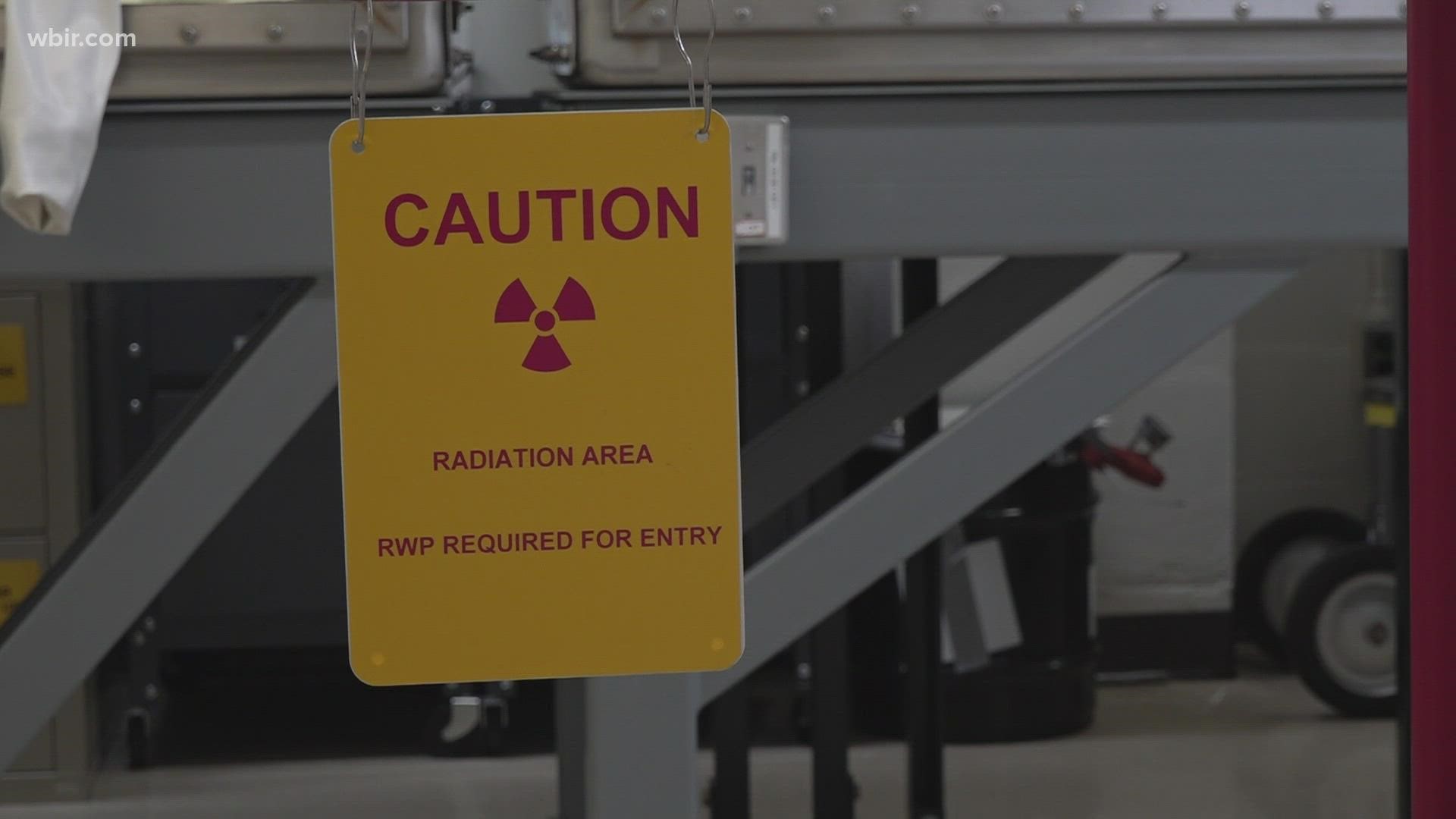OAK RIDGE, Tenn. — Oak Ridge National Laboratory produced uranium-233 as potential fuel for nuclear reactors in the 1950s. However, the project did not succeed, leaving a stockpile of waste uranium-233 on the site.
Now, scientists are using that stockpile to create isotopes used to treat aggressive forms of cancer.
"It's a very valuable way to treat aggressive cancers," said Dr. Susan Hogle, ORNL's head of radioisotope research and development.
Medical isotopes produced by ORNL are approved by the Food and Drug Administration to improve the quality of life in those who have bone cancer. Trials using ORNL's medical isotopes for treating Glioblastoma and Acute Myeloid Leukemia are underway.
Those isotopes target tumors without affecting other parts of the body as much as conventional forms of radiation treatment, Hogle said.
"This is a very targeted treatment," Hogle said. "They're able to deposit their energy very locally in that tumor site, without much damage to the surrounding tissue."
At the lab, uranium-233 decays into thorium-229. Then, scientists refine it into actinium-225 and actinium-227 for different cancer therapies.
Neither of those isotopes can be found naturally. Pharmaceutical companies rely on ORNL, one of the world's largest suppliers of this nuclear material, to develop the materials they need for therapies.
The half-life of the actinium isotopes is 10 days. Hogle said they have to ship it around the world, sometimes as far as Australia, and they have to do it quickly because half of the actinium will be gone within 10 days.
Hogle's team kept working throughout the pandemic to make sure they could keep shipping their medical isotopes around the world.
"We were able to take a material that was otherwise slated to be disposed of in a nuclear waste repository, and recover an incredibly valuable material," Hogle said.

